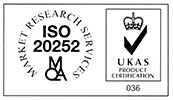“You’ve been in market research forever, what do you think are the key ingredients for success?”

I was asked this recently on a drizzly afternoon over a rare outside lockdown beer. As a market researcher with 25 agency-side years under my belt, my first instinct was obviously to critique the question as imprecise and too open-ended. But I’ve learnt that doesn’t go down too well in regular conversations, so I let it go and pressed on with answering as best I could.
I started with a glib comment about how you can’t beat experience and then added something about how market research agencies are in the service industry and ultimately clients want us to provide a creative but cost-effective solution … and if I am honest I was really just thinking about when I could have a proper beer in a glass, inside in the warmth.
Afterwards, I found myself dwelling further on it. Critical Research has changed a lot over the last 30 years but there have been two aspects of what we do that haven’t changed. These are the constants around which everything else has revolved. Whether that’s been financial downturns, methodology migrations, trendy techniques, or our latest somewhat global challenge … the fundamentals are vital.
At Critical Research, they boil down to this: people who care and quality data collection. You need both, but once you have both, whatever the type of project, or the client sector, or the data collection method, your research project is almost certainly going to fulfil its objectives.
Don’t get me wrong, this is hard to achieve. Not everyone is passionate about the latest developments in the widget sector or is prepared to fuss over the sampling or the topic guide in the way that is needed. But the recruitment of talented people is important, as is matching the right market researcher to the right research project.
Overshadowing this is the importance of our raw materials: the research questions, depth interviews, the quantitative data, the secondary data set, the open-ended questions, whatever the data source … and of course the instruments that collect and gather this data. Ensuring this core element is as good as it can be, has always been at the heart of what Critical Research does.
If you have read this far and are now expecting a list of ways in which this can be achieved, I am sorry to disappoint. That would be a much longer (and frankly more boring) piece. But for now, I just want to state the obvious: without those raw materials being as sound as possible, whatever we then build is flawed.
In an industry that typically deals with samples and inherent imprecision, it’s too easy to forget that the underlying data integrity is king.
James Hopkins, Research Director at Critical Research.



